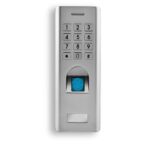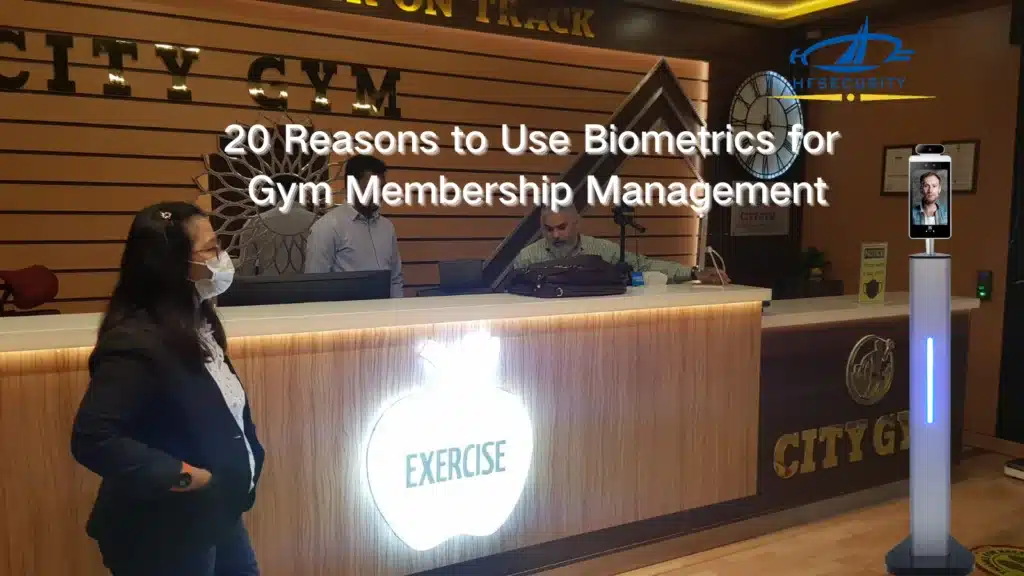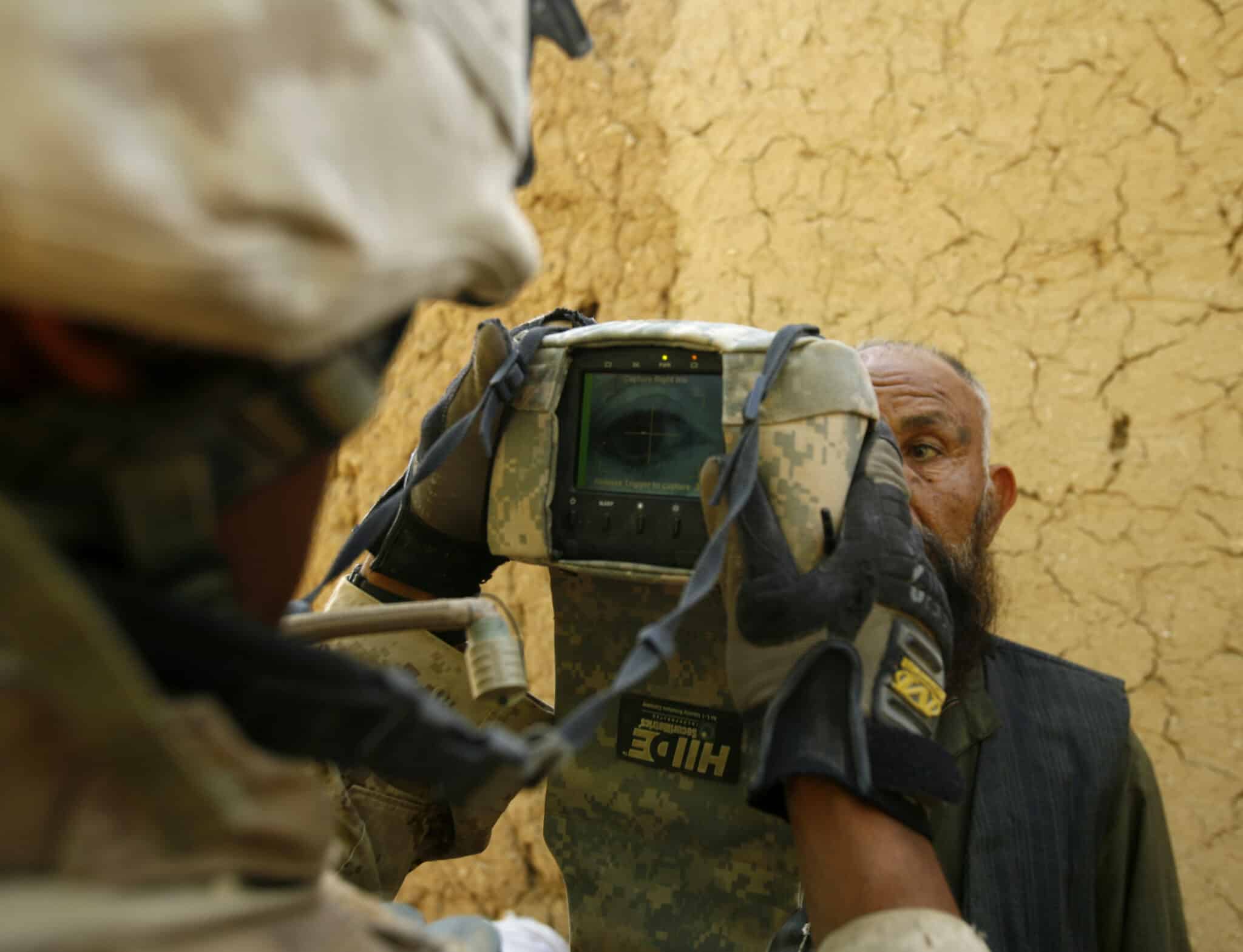Biometric attendance systems are changing how businesses track employee time. In Bangladesh, these systems are becoming popular.
Biometric systems use unique human traits like fingerprints or facial recognition. They offer accurate and secure attendance tracking. In Bangladesh, many companies face challenges with manual attendance methods. Traditional methods are prone to errors and time theft. Biometric systems solve these issues.
They ensure each employee is present and on time. This technology also saves administrative time and reduces paperwork. As a result, companies can focus more on growth and productivity. In this blog post, we will explore the benefits of biometric attendance systems in Bangladesh and how they can transform workplace efficiency.
Introduction To Biometric Systems
Biometric Attendance System Bangladesh is a modern solution for tracking employee attendance using unique biological traits. This system ensures accurate and efficient workforce management. Biometric systems offer advanced security and reliability, making them a popular choice for businesses in Bangladesh. Let’s explore what biometric attendance is and the different types of biometric technologies available.
What Is Biometric Attendance?
Biometric attendance refers to the use of biometric technology to record and verify employee attendance. This system captures unique biological traits such as fingerprints, facial features, or iris patterns to authenticate an individual’s identity. The main advantages of biometric attendance systems include:
-
Accuracy: It eliminates the possibility of buddy punching and time theft.
-
Efficiency: Reduces the time spent on manual attendance tracking.
-
Security: Provides a higher level of security compared to traditional methods.
Biometric Authentication in attendance systems works by scanning the employee’s biometric data and comparing it with the stored information. If there is a match, the system records the attendance. This data is then used for time and attendance management and employee monitoring.
In Bangladesh, many organizations are adopting biometric attendance systems to enhance their workforce management practices. These systems integrate seamlessly with other access control systems to provide a comprehensive solution for managing employee attendance and security.
Types Of Biometric Technologies
Biometric technologies vary based on the type of biological trait used for identification. Here are some common types of biometric technologies used in attendance systems:
-
Fingerprint Recognition: This is the most widely used biometric technology. It captures and compares the unique patterns of an individual’s fingerprints.
-
Facial Recognition: This technology scans the unique features of an individual’s face. It is non-intrusive and can be used for contactless attendance tracking.
-
Iris Recognition: It uses the unique patterns in the colored ring of the eye. Iris recognition is highly accurate and secure.
-
Voice Recognition: This technology identifies a person based on their voice patterns. It is useful in situations where hands-free operation is required.
Fingerprint recognition and facial recognition are the most popular in Bangladesh due to their ease of use and reliability. Each type of biometric technology has its own set of advantages and is suitable for different environments and applications.
The table below summarizes the key features of different biometric technologies:
|
Biometric Technology |
Key Features |
Applications |
|---|---|---|
|
Fingerprint Recognition |
High accuracy, easy to use |
Workforce management, access control |
|
Facial Recognition |
Contactless, non-intrusive |
Attendance tracking, security |
|
Iris Recognition |
Highly accurate, secure |
High-security areas, sensitive data |
|
Voice Recognition |
Hands-free, convenient |
Customer service, remote access |
Choosing the right biometric technology for your organization depends on your specific needs and environment. Each technology offers unique benefits, making biometric attendance systems a versatile and effective solution for time and attendance management in Bangladesh.
Benefits Of Biometric Attendance
Biometric Attendance System Bangladesh is transforming the way businesses manage employee attendance. This technology uses unique physical traits like fingerprints to verify identity. The benefits of biometric attendance systems are numerous, from improved security to enhanced efficiency. Let’s explore some key advantages.
Enhanced Security
Biometric Attendance Systems offer enhanced security by using unique biological traits for identity verification. Traditional methods like passwords or ID cards can be easily lost, stolen, or duplicated. In contrast, biometric technology ensures that only authorized personnel have access.
Here are some key security benefits:
-
Accurate Identity Verification: Biometric authentication eliminates the risk of buddy punching, where one employee clocks in for another.
-
Access Control: Restrict access to sensitive areas using fingerprint recognition, ensuring only authorized personnel enter.
-
Data Security: Biometric data is encrypted, making it difficult for unauthorized users to access or manipulate.
A table comparing traditional methods and biometric systems:
|
Traditional Methods |
Biometric Systems |
|---|---|
|
ID Cards/Passwords |
Fingerprint Recognition |
|
High Risk of Fraud |
Secure Identity Verification |
|
Easy to Duplicate |
Unique and Secure |
Increased Efficiency
Biometric attendance systems significantly increase workplace efficiency. They streamline the attendance management process, reducing manual tasks and human error.
Key efficiency benefits include:
-
Automated Time Tracking: Digital attendance solutions automatically record employee attendance, saving time and reducing errors.
-
Reduced Administrative Work: With biometric technology, managers no longer need to manually track and verify attendance records.
-
Real-time Data: Access real-time attendance data, helping to make informed decisions quickly.
Biometric attendance systems also integrate seamlessly with other workplace automation tools. This integration further enhances efficiency by providing a comprehensive time tracking solution. Additionally, employee monitoring becomes more effective, as managers can easily track attendance patterns and address issues promptly.
In summary, biometric attendance systems in Bangladesh offer numerous benefits. From enhanced security to increased efficiency, they are transforming how businesses manage attendance and access control.
Current Trends In Bangladesh
Biometric Attendance Systems are becoming more popular in Bangladesh. These systems use fingerprint recognition and facial recognition to record attendance. They are used in schools and companies. Let’s explore the current trends in Bangladesh.
Adoption In Schools
Many schools in Bangladesh are now using Biometric Technology. This helps to track student attendance accurately. Traditional methods like roll calls are time-consuming and sometimes inaccurate. Biometric systems solve this problem. They also help to improve security.
Benefits of Biometric Attendance Systems in schools:
-
Accurate Attendance Tracking: No manual errors.
-
Time-Saving: Quick scans replace long roll calls.
-
Increased Security: Only authorized students can enter the school.
Some schools use fingerprint recognition. Others use facial recognition systems. Both methods are effective. They ensure that student attendance is recorded in real-time. This data can be easily accessed by teachers and parents. Here is a simple comparison:
|
Method |
Advantages |
|---|---|
|
Fingerprint Recognition |
High accuracy, quick processing |
|
Facial Recognition |
Contactless, hygienic |
Implementation In Corporates
Many companies in Bangladesh are adopting Corporate Attendance Solutions. They use Biometric Technology for Employee Monitoring. This ensures that employees are working their scheduled hours. It also helps in managing leaves and overtime.
Key features of Biometric Attendance Systems in companies:
-
Employee Monitoring: Real-time tracking of employee attendance.
-
Time Management Software: Helps in managing work hours and breaks.
-
Digital Attendance Systems: Reduces paperwork and manual entries.
Corporate Attendance Solutions often use fingerprint recognition. Some also use facial recognition systems. These systems are reliable and secure. Here is a simple comparison:
|
Method |
Advantages |
|---|---|
|
Fingerprint Recognition |
High accuracy, quick processing |
|
Facial Recognition |
Contactless, hygienic |
Biometric Attendance Systems help companies in Attendance Tracking. This improves productivity and reduces time theft. Employees also appreciate the ease of use. There is no need to remember passwords or carry ID cards. Just a simple scan is enough.
Credit: www.facebook.com
Challenges Faced
Biometric Attendance System Bangladesh has revolutionized the way companies track and manage employee attendance. This technology uses unique human characteristics like fingerprints and facial recognition to ensure accurate timekeeping and access control. Despite its benefits, implementing such systems brings certain challenges. Companies face technical issues and privacy concerns that need careful consideration.
Technical Issues
Implementing a Biometric Attendance System involves several technical challenges. First, the reliability of the Fingerprint Scanner and Facial Recognition Technology is crucial. These devices can sometimes fail to recognize individuals due to wear and tear, poor maintenance, or variations in physical appearance.
Another common issue is the integration of Biometric Authentication with existing Attendance Software. Ensuring that these systems communicate efficiently can be complicated. Inconsistent data transfer can lead to errors in Employee Tracking and inaccurate attendance records.
Here are some technical issues that companies may encounter:
-
Device malfunctions due to hardware defects
-
Software bugs and glitches
-
Compatibility issues with current Attendance Management System
-
Inadequate technical support and maintenance
Data storage is another significant challenge. Biometric systems generate large volumes of data that need secure storage. Without proper data management, organizations risk losing critical information.
Below is a table summarizing common technical issues and their impacts:
|
Issue |
Impact |
|---|---|
|
Device Malfunctions |
Inaccurate Attendance Records |
|
Software Bugs |
System Downtime |
|
Compatibility Issues |
Disrupted Operations |
|
Data Storage Problems |
Loss of Critical Information |
Privacy Concerns
Privacy is a major concern with the use of Biometric Attendance Systems. Employees often worry about how their personal data is used and stored. Companies need to ensure that the data collected through Fingerprint Scanners and Facial Recognition Technology is secure and used ethically.
Privacy regulations in Bangladesh require companies to protect employee data. Businesses must comply with these regulations to avoid legal issues. This includes implementing strong Data Security measures and policies.
Here are some key privacy concerns:
-
Unauthorized access to biometric data
-
Potential misuse of personal information
-
Lack of transparency in data usage
-
Inadequate data protection measures
Companies must be transparent about their data collection practices. They should inform employees about how their data is collected, stored, and used. Employees should also have access to their own data and be able to request its deletion if necessary.
Ensuring Data Security involves several steps:
-
Encrypting all stored biometric data
-
Restricting access to authorized personnel only
-
Regularly updating security protocols
-
Conducting regular audits of data usage
By addressing these privacy concerns, companies can build trust with their employees and ensure the successful implementation of Time And Attendance Solutions.
Legal Framework
Biometric Attendance Systems in Bangladesh are gaining popularity for their efficiency and accuracy. However, it is crucial to understand the legal framework governing the use of such technology. The legal framework ensures that the use of biometric data respects privacy and adheres to established standards.
Regulations Governing Biometric Data
The use of biometric technology in Bangladesh is subject to various regulations to protect individual privacy and ensure data security. Several key aspects govern the collection, storage, and use of biometric data:
-
Data Protection Regulations: These regulations mandate that organizations must obtain explicit consent from employees before collecting biometric data. This ensures transparency and respect for individual privacy.
-
Storage and Security: Organizations must implement robust biometric security measures to protect stored data from unauthorized access. This includes encryption and secure storage solutions.
-
Usage Limitations: The use of biometric data must be strictly limited to employee attendance tracking and should not be used for any other purpose without prior consent.
In Bangladesh, the Digital Security Act 2018 plays a significant role in regulating digital attendance solutions. It outlines the permissible uses of biometric data and the penalties for misuse.
|
Regulation |
Description |
|---|---|
|
Data Protection Regulations |
Mandates explicit consent and transparent data collection practices |
|
Storage and Security |
Requires robust security measures to prevent unauthorized access |
|
Usage Limitations |
Limits the use of biometric data to specific purposes like attendance tracking |
Compliance Requirements
Organizations using biometric attendance systems must adhere to specific compliance standards to ensure legal use of biometric data. These requirements include:
-
Consent and Notification: Employers must inform employees about the use of biometric technology and obtain their consent. This ensures employees are aware of how their data will be used.
-
Data Minimization: Only necessary biometric data should be collected. This helps in reducing the risk associated with data breaches.
-
Access Control: Implementing strict access controls ensures that only authorized personnel can access biometric data. This helps in maintaining data integrity.
-
Regular Audits: Conducting regular audits of the biometric attendance system ensures compliance with data protection regulations. This also helps in identifying and addressing potential security vulnerabilities.
Compliance with these requirements not only ensures legal adherence but also builds trust among employees. It demonstrates a commitment to protecting their biometric data privacy. Organizations must stay updated with changes in data protection regulations to maintain compliance.
Incorporating these compliance standards into attendance management systems guarantees that biometric identification and employee attendance tracking are conducted lawfully and ethically.
Comparison With Traditional Systems
In Bangladesh, the shift from traditional attendance systems to biometric technology is gaining momentum. Understanding how biometric attendance systems compare with traditional methods is essential for businesses aiming to streamline their workforce management and enhance their time and attendance solutions.
Limitations Of Manual Attendance
Manual attendance systems have several limitations that can hinder efficient workforce management. First, they are prone to human errors. Employees might forget to sign in or out, leading to inaccurate attendance tracking. This can cause issues during payroll integration, as incorrect data can result in overpayments or underpayments.
-
Human Errors: Mistakes in recording attendance.
-
Time-Consuming: Manual entries take longer to process.
-
Fraud: Employees can easily manipulate attendance records.
-
Administrative Burden: Increased workload for HR staff.
Additionally, manual attendance systems lack advanced security features. Unauthorized access to attendance records is easier, compromising the integrity of employee monitoring. The table below highlights some of the key limitations of manual attendance systems:
|
Limitation |
Impact |
|---|---|
|
Human Errors |
Inaccurate attendance records |
|
Time-Consuming |
Delays in processing |
|
Fraud |
Manipulated data |
|
Administrative Burden |
Increased workload |
Advantages Of Automation
Automated biometric attendance systems offer numerous benefits over manual methods. One significant advantage is the elimination of human errors. Biometric technology ensures accurate and reliable attendance tracking by using unique physical characteristics like fingerprints or facial recognition.
Automation benefits include:
-
Accuracy: Precise attendance records.
-
Efficiency: Faster processing of attendance data.
-
Security: Enhanced security features to prevent unauthorized access.
-
Integration: Seamless payroll integration.
Moreover, biometric attendance systems reduce the administrative burden on HR staff. Automated systems handle data collection and storage, allowing HR personnel to focus on more strategic tasks. This also improves overall workforce management by providing real-time data on employee attendance and punctuality.
Comparing the advantages of automation with manual attendance issues clearly shows why many organizations in Bangladesh are adopting biometric attendance solutions:
|
Aspect |
Manual Attendance |
Biometric Attendance |
|---|---|---|
|
Accuracy |
Prone to errors |
High accuracy |
|
Efficiency |
Time-consuming |
Efficient processing |
|
Security |
Low security |
High security |
|
Integration |
Manual integration |
Automatic integration |
The shift to biometric attendance systems in Bangladesh is a step towards modernizing employee monitoring and improving time and attendance solutions. By addressing the limitations of manual attendance and leveraging the advantages of automation, businesses can achieve better workforce management and operational efficiency.
Future Prospects
Introduction paragraph about Biometric Attendance System Bangladesh and Future Prospects…
Technological Advancements
The future of Biometric Attendance Systems in Bangladesh looks promising with numerous technological advancements on the horizon. These advancements are set to enhance the efficiency and accuracy of Attendance Management Software. Here are a few key developments to watch:
-
Fingerprint Recognition Technology: Improvements in fingerprint sensors will make employee attendance tracking more reliable. Enhanced algorithms will reduce errors and increase speed.
-
Facial Recognition: The integration of advanced facial recognition technology will enable touchless attendance tracking. This is particularly useful in maintaining hygiene standards.
-
Cloud Integration: Cloud-based digital attendance systems will allow real-time data access and analytics. This will help managers make informed decisions.
-
Mobile Integration: Mobile apps for biometric attendance solutions will allow employees to clock in and out from remote locations. This is ideal for remote working scenarios.
These advancements will not only improve security and access control but also streamline processes. As technology evolves, the adoption of more sophisticated biometric technology benefits will become widespread. This will lead to a seamless and efficient system for tracking employee attendance.
Potential Market Growth
The market for biometric attendance systems in Bangladesh is poised for significant growth. Several factors contribute to this positive trend:
-
Increased Awareness: There is a growing awareness of the benefits of biometric systems in education and workplaces. Organizations are recognizing the value of accurate employee attendance tracking.
-
Government Initiatives: Government policies promoting digital transformation are encouraging the adoption of time and attendance solutions. Support for technology-driven initiatives is on the rise.
-
Market Trends In Bangladesh: The trend towards automation and digitalization is evident. Companies are investing in biometric attendance solutions to improve efficiency and productivity.
-
Cost-Effectiveness: As technology becomes more affordable, more small and medium enterprises (SMEs) are adopting biometric attendance systems. This is driving market growth.
Below is a table summarizing the key factors influencing market growth:
|
Factor |
Impact |
|---|---|
|
Increased Awareness |
High |
|
Government Initiatives |
Moderate |
|
Market Trends In Bangladesh |
High |
|
Cost-Effectiveness |
High |
These factors indicate a strong potential for growth in the biometric attendance system market in Bangladesh. Companies are increasingly looking to implement these systems to enhance security and access control while improving overall efficiency.
Case Studies
Biometric Attendance System Bangladesh has become a crucial tool for organizations aiming to enhance workplace efficiency and ensure accurate attendance tracking. Through various case studies, we can see the impact and effectiveness of these systems in different settings. Here, we explore successful implementations and lessons learned from integrating biometric technology in diverse environments.
Successful Implementations
Several organizations in Bangladesh have successfully implemented biometric attendance systems, showcasing the potential of this technology. Below are a few notable examples:
-
Company A: This company adopted fingerprint recognition for attendance tracking. The system reduced payroll errors and improved time management solutions. Employees appreciated the quick and seamless clock-in process.
-
School B: A large educational institution integrated facial recognition to enhance security systems. The system ensured that only authorized personnel and students accessed the premises. This also minimized tardiness and absenteeism.
-
Hospital C: Implemented biometric technology for both attendance and access control systems. This dual functionality improved overall security and streamlined HR automation in the hospital environment. The accuracy in attendance records also led to better employee monitoring and resource allocation.
Let’s take a closer look at the benefits observed:
|
Organization |
Biometric Technology Used |
Benefits |
|---|---|---|
|
Company A |
Fingerprint Recognition |
Reduced payroll errors, improved time management |
|
School B |
Facial Recognition |
Enhanced security, reduced absenteeism |
|
Hospital C |
Fingerprint and Facial Recognition |
Improved security, streamlined HR processes |
Lessons Learned
Implementing biometric attendance systems has not been without challenges. The case studies reveal several important lessons:
-
Data Privacy Concerns: Organizations must ensure compliance with data protection regulations. Transparent communication with employees about data usage is essential.
-
System Integration: Integrating biometric systems with existing HR and security systems can be complex. Proper planning and testing are crucial to avoid disruptions.
-
Employee Training: Training employees on using new systems is vital. Resistance to change can be minimized through workshops and continuous support.
-
Maintenance and Support: Regular maintenance of biometric devices is necessary. Organizations should have a plan for technical support and troubleshooting.
Based on these lessons, here are some recommendations:
-
Conduct a thorough needs analysis before selecting a biometric system.
-
Ensure the chosen system aligns with organizational goals and workflows.
-
Invest in employee training programs to facilitate smooth transitions.
-
Establish a robust data privacy policy and communicate it clearly to all stakeholders.
By learning from these experiences, organizations can better navigate the challenges and maximize the benefits of biometric attendance systems in Bangladesh.
Frequently Asked Questions
What Is A Biometric Attendance System?
A biometric attendance system uses unique biological traits for identification. It ensures accurate tracking of employee attendance. Common traits used include fingerprints, facial recognition, and iris scans.
How Does Biometric Attendance Work?
Biometric attendance systems capture and store unique biological data. When an employee clocks in, the system matches the data with stored records. This ensures accurate attendance tracking.
Why Use Biometric Attendance Systems In Bangladesh?
Biometric attendance systems offer accurate and reliable employee tracking. They reduce time fraud and ensure efficient workforce management. These systems also enhance security and operational efficiency.
What Are The Benefits Of Biometric Systems?
Biometric systems provide accurate attendance tracking. They reduce time theft and increase productivity. They also enhance security and streamline HR processes.
Summing Up,
Adopting a biometric attendance system in Bangladesh offers numerous benefits. It ensures accuracy and prevents fraud. Employers save time and resources. Employees enjoy fair treatment and timely payroll. Overall, this system boosts workplace efficiency. Simple to use and maintain, it fits well in any business.
As technology advances, adopting such systems becomes essential. Embrace the change for a brighter future. Enhance your business operations today.









